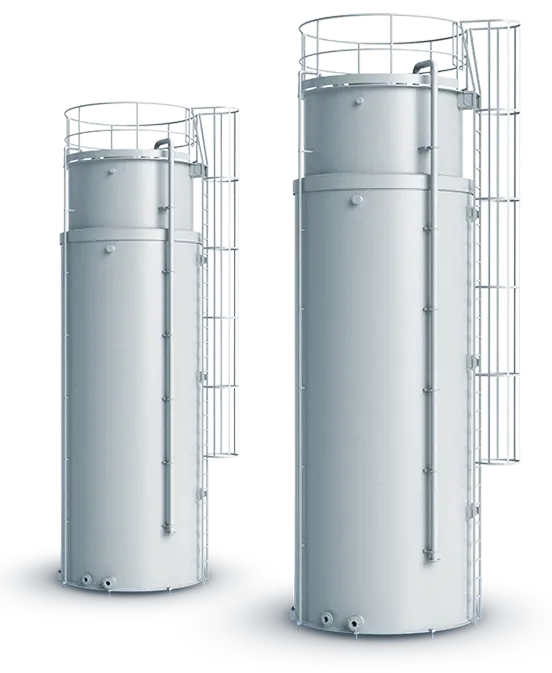Tanks made of thermoplastics
- Home
- Tanks made of thermoplastics
THERMOPLASTIC STORAGE TANKS AND VESSELS
Thermoplastic storage tanks and vessels made of homogeneous, spirally wound pipes with large diameters from DN 850 to DN 4,500 mm.
Vessels and tanks made of thermoplastic are generally designed mainly for storage of solutions of aggressive chemical liquids, contaminated wastewater, etc. They combine the advantages of chemical resistance, high durability, and almost zero maintenance costs.
They are manufactured using the spiral winding technique, i.e. they do not have welded joints.
Thermoplastics are not only the best solution for liquid chemicals; coiled tubes and tanks made from them have the smallest carbon footprint compared to metal and laminated tanks. For winding tank shells, we just melt the granular plastic. And most importantly, the product can be completely recycled at the end of its useful life.
Plastic tanks are the best solution for the environment.

- Storage tanks, usually standing, means vertical are available in single-walled (single) or double-walled (two tanks in one) version – the outer tank is in the second case the “emergency sump”. The diameter of the coiled tanks is very flexible (literally “by the millimeter”) from DN 850 to DN 4500 mm, and in the case of rim tanks even up to DN 6000 mm. The height of the tanks is not limited. The maximum nominal volume is 200 m³.
- Horizontal cylindrical tanks have some design features from a design point of view, which depend on their location, for example if they are open-air or underground. In underground tanks, the thickness of shell tends to be greater. The maximum diameter is 3.5 m, the length up to 15 m. For higher underground storage volumes, we interconnect multiple tanks.
- For the production of square tanks, we have a special welding technique without additional material. It is a perpendicular butt welding. This technology produces a rigid corner of the vessel that has the properties of a homogeneous material – it is not a “joint” as in extrusion welding. For the inner edges, the overflow at the weld point “disappears” and the smooth surface of the edges allows perfect cleaning of the vessel


